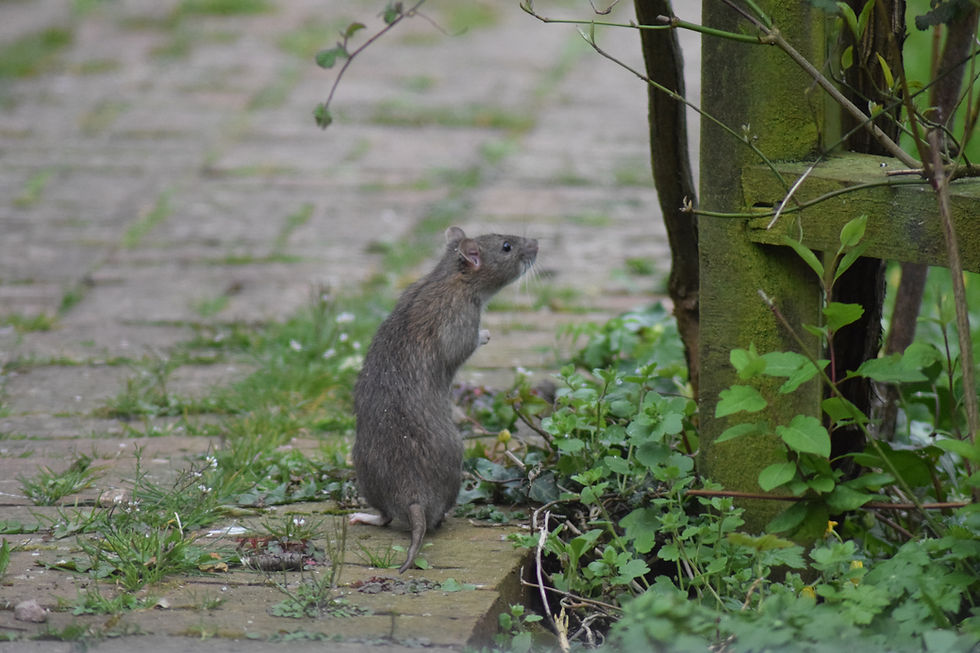Lord Rodent (Ninkilim) Sumerian Pest God
- Sylvia Rose

- Jan 1, 2024
- 3 min read
Ninkilim is a Sumerian god of wild animals. His name means Lord Rodent. He's especially connected to rats, mice and other vermin, insect pests such as locusts and weevils. His sukkal (divine attendant or vizier) is the dragon lion demon Ushumgallu.
Read: Cult of the Fire God - Bronze Age Quest Adventure
See also:
Generally Ninkilim is a God but in some circumstances is portrayed as Goddess.
Ninkilim has his origins in the roots of agriculture and grains. Prayers invoke him (as a Goddess) to keep the sharp-toothed mice from eating the crop.
Read: Cult of the Fire God - Bronze Age Quest Adventure
Ninkilim features in the Zu-buru-dabbeda, a group of incantations against grain-destroying creatures such as rodents, weevils and locusts. In Sumerian he's called a.za.lu.lu or lord of teeming creatures.
See also:
The worship of Ninkilim dates from early Sumerian times (c. 4100 BCE) until the Neo-Babylonian Empire. He may have existed prior to the date as the practice of agriculture goes back to c. 12,000 BCE in the Levant and c. 9800 BCE in Mesopotamia.
Through trial and error people cultivate and interbreed crops. It's said the Gods become impatient with the slowness of humans. They send the Seven Sages, or apkullu, to show humans how to survive. The eight Neolithic founder crops are emmer wheat, einkorn wheat, hulled barley, peas, lentils, bitter vetch, chickpeas, and flax.
See also:
Ninkilim is one of the longest lived Gods on the Mesopotamian timeline. His continued invocation attests to the destructive properties of mice and rats among the grain-dependent Sumerians.
Fossilized ancestors of modern rats and mice date back c. 34 million years. Comparatively, from early forerunners humans have been on earth c. 4 millions years. Since then rats and mice come to realize the purpose of humans is to provide them with food.
See also:
Rats and mice don't just eat a little bit. They can raze entire granaries with their enormous appetites and sheer force of numbers. In ancient Mesopotamia, success of the harvest and protection of the grains are paramount.
The larger problem with rats and mice is not just how much they eat, but how much they spoil with urine and defecation. An estimated three times as much grain goes to waste due to spoilage as due to consumption by rodents.
See also:
The Egyptians store grain in sealed silos. The Greeks use enormous covered clay vessels. The later Romans keep stores of grain in vast warehouses. As long as it stays dry, grain can last for years.
Read: Cult of the Fire God - Bronze Age Quest Adventure
But if one small rodent gets a whiff of promise from an accessible granary it's quick to invite all its friends. They'll nibble a tiny hole into a pouring spout of rodent paradise as all the farmer's work and hope drains away.
See also:
Vermin, insects, plant disease, too much or not enough water, shifting land masses and various attacks by robber armies or conquering heroes all threaten the food supply. The Mesopotamians value grain as life itself. In times of high yield it's a desirable trade item.
Praises and sacrifices to Nikilim are given, asking the deity to keep the rodents from eating the grain. Prayers rise to the god with sacred smoke of incense and aromatic wood. In the great god list An = Anum Nikilim appears as a female deity. In the Sumerian Farmer's Almanac, s/he receives prayers and offerings as the Goddess Nikilim.
See also:
In field-pest incantations he's masculine. In later periods s/he's known almost exclusively as a male deity. Also worshiped in other cities such as Lagash, Nikilim is tutelary god for the urban center of Diniktum, estimated east central Iraq. Although mentioned in texts of the 18th century BCE, including battles at the site, it's now a lost city.
See also:









